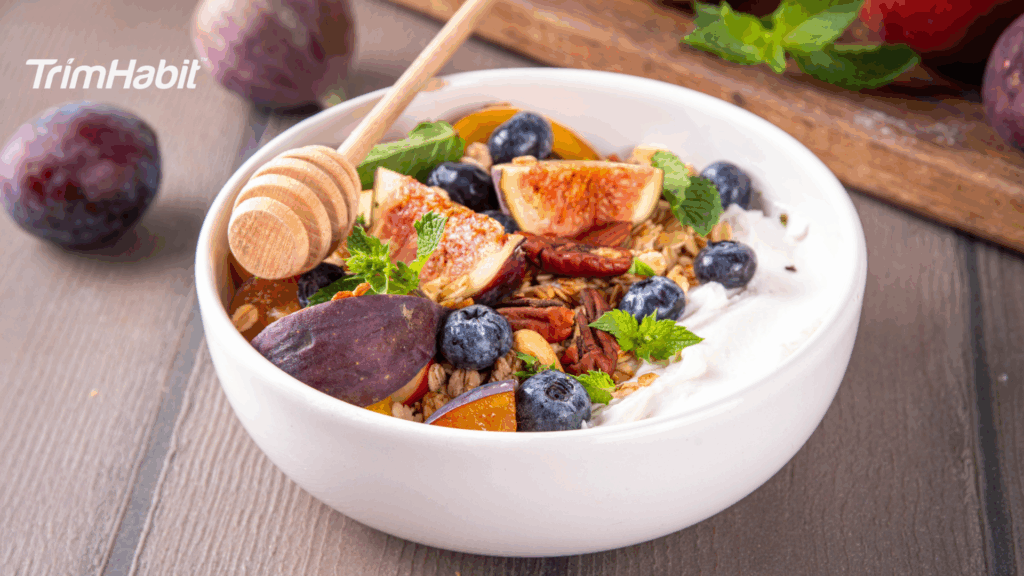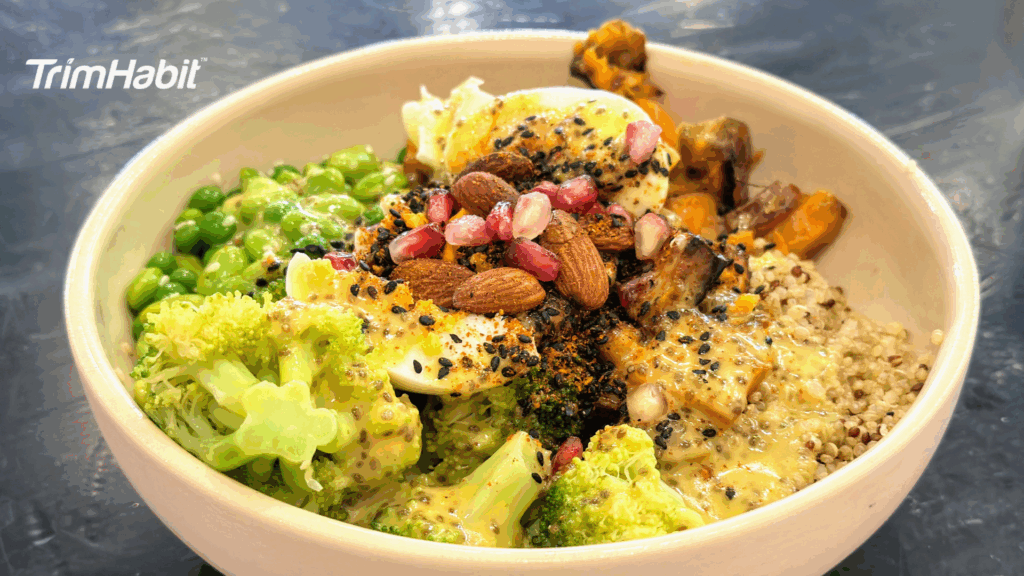Dietary choices play a crucial role for achieving a healthier lifestyle and effective weight management. In the midst of the numerous choices available, walnuts demonstrate significant nutritional value, offering a unique blend of essential nutrients that can contribute significantly to your weight loss journey. Beyond their delightful taste and crunchy texture, walnuts have gained recognition for their remarkable health benefits, particularly in weight and cardiovascular disease management.
As we look into the intricacies of the health benefits of walnuts for weight loss, prepare to discover why these nutrient-dense gems deserve a prominent place in your daily nutrition.
Brief Overview Of Walnuts
Walnuts, the edible seeds of the Juglans genus, are renowned for their distinctively rugged shells and brain-like appearance. Originating from the walnut tree, these nuts are encased in a rugged, woody shell protecting the kernel. Walnut trees are found across various regions globally, with popular varieties including the English, black, and white walnuts1.
Nutritionally, walnuts are brimming with goodness, providing a rich source of essential nutrients. They are notably high in polyunsaturated fats, particularly omega-3 fatty acids, contributing to heart health and brain function. Additionally, walnuts boast a substantial amount of protein, fiber, vitamins (such as B vitamins and vitamin E), and minerals (such as magnesium and phosphorus)2.
Beyond their nutritional profile, walnuts have earned a reputation for their versatility in culinary applications. Whether sprinkled over salads, blended into smoothies, or enjoyed as a snack, walnuts offer a satisfying crunch and a distinctive, mildly sweet flavor.
2 Main Types of Walnuts
There are several varieties of walnuts, but the two main types commonly referred to are:
English Walnut (Juglans regia)
Also known as Persian walnut or common walnut, the English walnut is the most widely cultivated and consumed type globally. It originated in the regions stretching from the Balkans to China. The nuts have a thin, easily cracked shell and a sweet flavor. They are often eaten independently as a snack or used in various culinary applications, such as baking, cooking, and salads.
Black Walnut (Juglans nigra)
Black walnuts are native to North America and are known for their more rigid shell and distinct, bold flavor. The shell is thicker and more difficult to crack compared to English walnuts. The taste of black walnuts is more robust and earthier, and they are often used in baking, cooking, or eaten as a snack. Black walnuts are less commonly found in commercial markets compared to English walnuts.
How Walnut And Weight Loss Are Related
Walnuts and weight loss share a noteworthy connection due to the unique nutritional profile of these small but mighty nuts. Packed with healthy fats, including omega-3 fatty acids, walnuts deliver a satisfying sensation that fosters a feeling of fullness, helping to control appetite and reduce the likelihood of overeating3.
The high fiber content in walnuts further supports weight loss efforts by enhancing digestive health and contributing to prolonged feelings of satisfaction. Moreover, the omega-3 fatty acids found in walnuts have been associated with improved metabolism, potentially aiding inefficiently burning calories. As a nutrient-dense snack or versatile culinary ingredient, walnuts provide a satisfying alternative to less nutritious options, contributing to a well-rounded and balanced diet essential for brain health and successful weight management4.
Additionally, the heart-healthy monounsaturated and polyunsaturated fats in walnuts contribute to cardiovascular well-being, an essential consideration in maintaining overall heart disease and health while striving for weight loss. With their delicious flavor and diverse applications in meals and snacks, walnuts are a beneficial ally in pursuing a healthier weight and well-being5.
While the effects may not appear as miraculous weight loss, the valuable contributions of walnuts to the weight management process are significant and should not be overlooked.
Health Benefits Of Walnuts For Weight Loss
Incorporating walnuts into a weight loss diet holds significant merit, making these nuts a valuable addition to your nutritional strategy6. The following are vital reasons highlighting the significance of including walnuts in your weight loss journey:
Satiety and Appetite Control
As indicated, walnuts are rich in dietary fiber, promoting a feeling of fullness and satiety. This can improve appetite control, reducing the likelihood of overeating and snacking unhealthy, calorie-dense foods7.
Caloric Efficiency
Despite being calorically dense, the nutrients in walnuts make them a nutritious and satisfying snack. Their combination of healthy fats, protein, and fiber can help manage hunger while providing essential nutrients, making them a smart choice for those aiming to reduce overall calorie intake8.
Healthy Fats for Energy
Walnuts are a rich source of polyunsaturated fats, including alpha-linolenic acid (ALA) and omega-3 fatty acids. These healthy fats can sustain energy, supporting physical activity and exercise – crucial components of any weight loss plan9.
Nutrient Density
Walnuts provide many essential nutrients, including vitamins, minerals, and antioxidants. Incorporating nutrient-dense foods into your diet is vital during weight loss to ensure that your body receives the necessary elements for overall health10.
Improved Insulin Sensitivity
Some studies suggest that walnuts may positively impact insulin sensitivity, helping to regulate blood sugar levels. This can be particularly beneficial for individuals managing their body weight and aiming to prevent insulin resistance11.
Heart Health Benefits
The heart-healthy monounsaturated and polyunsaturated fats in walnuts may contribute to cardiovascular, heart, and gut health, an essential consideration in weight loss as individuals strive to improve overall health12.
Potential Side Effects Of Walnuts
While walnuts offer many health benefits, it’s essential to consider certain precautions and factors to ensure they align with individual dietary needs and health conditions. Here are some necessary precautions and considerations when incorporating walnuts into your diet:
Allergies
Individuals with nut allergies should exercise caution when consuming walnuts. Allergic reactions can range from mild symptoms to severe, life-threatening responses. Awareness of nut allergies is crucial before including walnuts in your diet13.
Caloric Density
Despite their nutritional benefits, walnuts are calorically dense due to their healthy fat content. Moderation is key, especially for individuals on a calorie-restricted diet. Be mindful of portion sizes to avoid unintentional excess calorie saturated fat intake14.
Omega-3 Fatty Acid Intake
While walnuts are a good source of plant-based omega-3 fatty acids (ALA), they do not provide the same type of omega-3s found in fatty fish (EPA and DHA). If omega-3 intake is a primary concern, consider supplementing with fish oil or other marine sources15.
Oxalates
Walnuts contain oxalates, naturally occurring compounds that can contribute to the formation of kidney stones in susceptible individuals. If you have a history of kidney stones or are at risk, consult with a healthcare professional before consuming large quantities of walnuts16.
FODMAPs
Walnuts contain fermentable carbohydrates known as FODMAPs (fermentable oligosaccharides, disaccharides, monosaccharides, and polyols). Some individuals with irritable bowel syndrome (IBS) or other gastrointestinal sensitivities may experience discomfort. In such cases, consider limiting the intake of walnuts or choosing alternative low-FODMAP nuts17.
Nutrient Imbalance
While walnuts are nutrient-dense, it’s essential to maintain a balanced diet that includes a variety of foods. Relying solely on walnuts for essential nutrients may lead to imbalances, so diversify your food choices to ensure a comprehensive nutrient intake18.
Interaction with Medications
Consult a healthcare professional if you take medications, especially blood thinners or anticoagulants. The omega-3 fatty acids in walnut tree nuts may have mild anticoagulant effects, and their consumption may interact with certain medications4,19.
How To Enjoy Eating Walnuts
Enjoying walnuts can be a delightful experience, as these nutrient-packed nuts lend themselves to various culinary applications. Here are several creative and enjoyable ways to incorporate walnuts into your otherwise healthy diet too:
- Snack On Them Raw
Embrace the simplicity of raw walnuts as a quick and convenient snack. Their natural crunch and mild, nutty flavor make for a satisfying munch between meals.
- Add to Breakfast
Sprinkle chopped walnuts onto your morning cereal, oatmeal, or yogurt. This not only adds a pleasing texture but also enhances the nutritional content of your breakfast with healthy fats and essential nutrients.
- Blend into Smoothies
Boost the nutritional value of your smoothies by adding a handful of walnuts. Their creamy texture complements the drink while providing a dose of healthy fats and protein.
- Include in Salads
Toss chopped walnuts into salads for an extra layer of flavor and texture. They pair well with various greens, fruits, and cheeses, creating a delicious and nutritious salad.
- Make Walnut Butter
Create your walnut butter by blending walnuts until smooth. Spread it on whole-grain toast, use it as a dip for fruit slices, or incorporate it into your favorite recipes for a unique twist.
- Bake into Goods
Add chopped walnuts to your baked goods, such as muffins, pancakes, or banana bread. Their rich flavor and crunch can elevate your favorite treats’ taste and nutritional content.
- Incorporate into Savory Dishes
Use chopped or crushed walnuts as a topping for pasta, grilled vegetables, or roasted dishes. They add a satisfying crunch and a nutty depth of flavor to savory meals.
- Create Energy Bites
Mix walnuts with dates, dried fruits, and a hint of honey to form energy bites. These delicious bite-sized snacks provide a quick energy boost during the day.
- Make Walnut-Crusted Proteins
Crush walnuts and use them as a coating for chicken, fish, or tofu. This adds a flavorful and nutritious crust to your protein sources.
- Pair with Cheese
Enjoy walnuts with your favorite cheese for a classic and sophisticated pairing. Creamy cheese and crunchy walnuts make for a satisfying and indulgent snack.
- Pesticide Residue
If possible, choose organic walnuts to reduce the risk of exposure to pesticides. Washing conventionally grown walnuts thoroughly can also help minimize pesticide residue.
Experimenting with these diverse ways to incorporate walnuts into your meals can make the experience enjoyable and ensure you reap their numerous health benefits. Whether you prefer them as a standalone snack or a versatile recipe ingredient, walnuts can add nutritional value and a delicious element to your daily meals.
Summary
The article highlights the nutritional prowess of walnuts and its impact on weight management. The overview emphasizes the unique blend of essential nutrients found in walnuts, including polyunsaturated fats, omega-3 fatty acids, fiber, vitamins, and minerals. The relationship between walnuts and weight loss is explored, emphasizing their role in promoting satiety, supporting metabolism, and contributing to overall well-being.
The article also discusses precautions and considerations, such as allergies, caloric density, and interactions with medications, to ensure a balanced and safe incorporation of walnuts into the diet. Finally, creative and enjoyable ways to enjoy walnuts are suggested, showcasing their versatility in various culinary applications. Overall, the article provides a guide to understanding, incorporating, and relishing the many health benefits of walnuts in the context of a weight loss journey.









